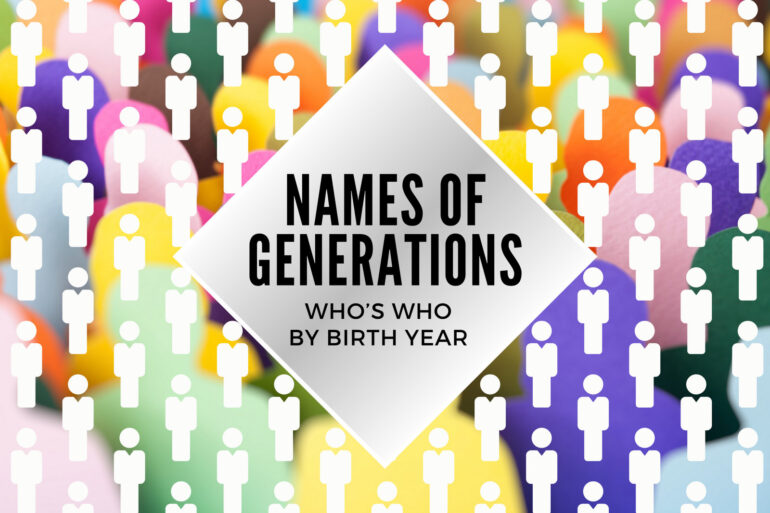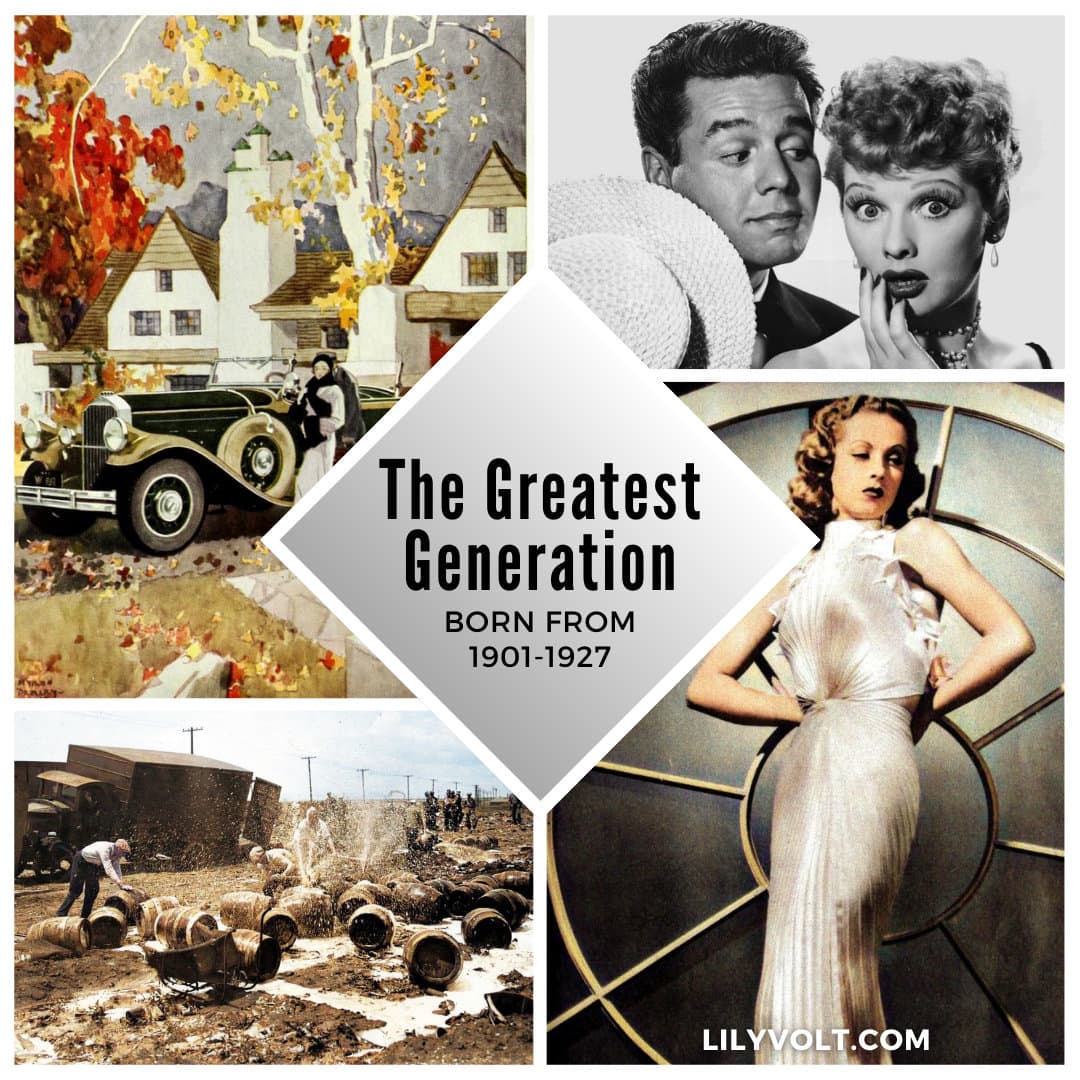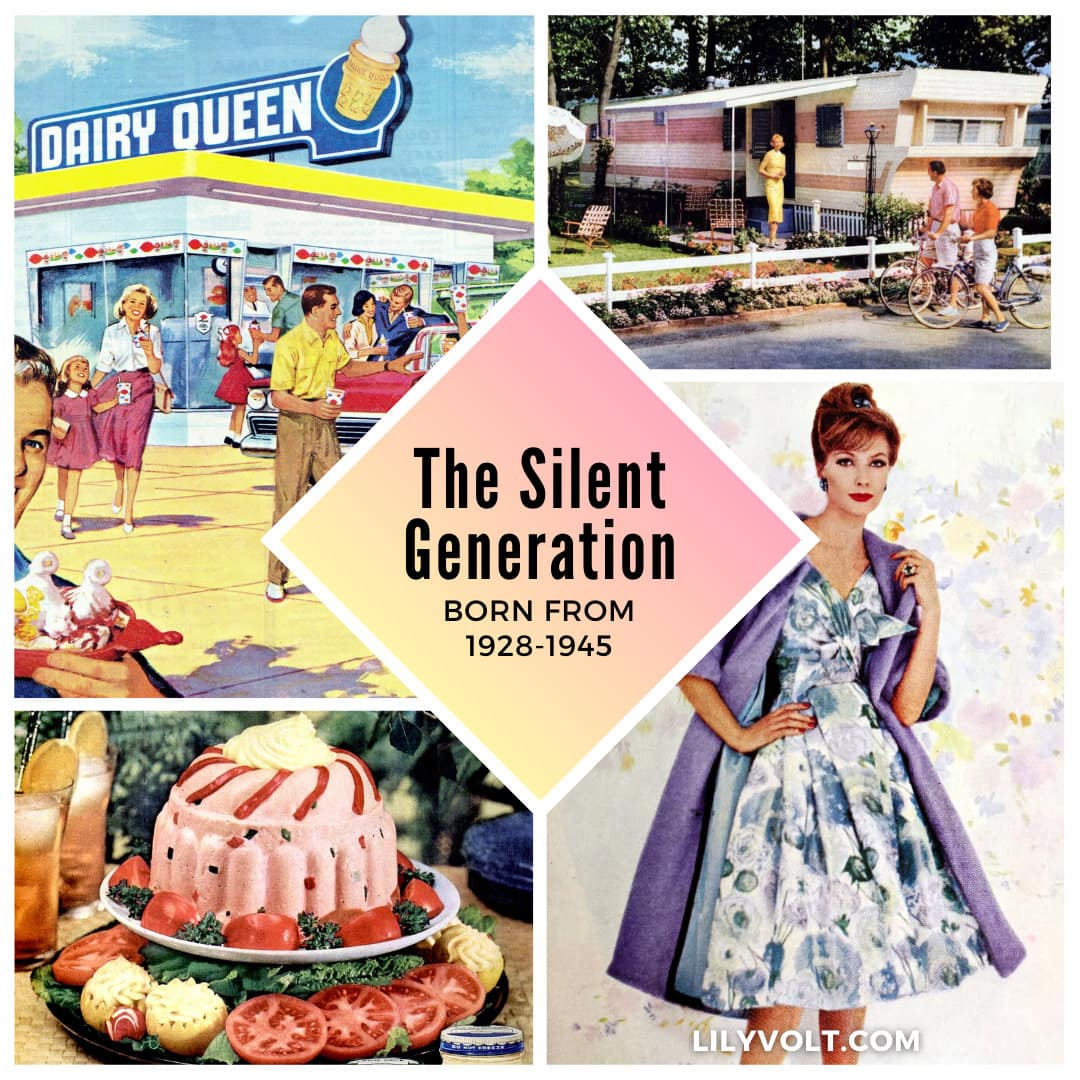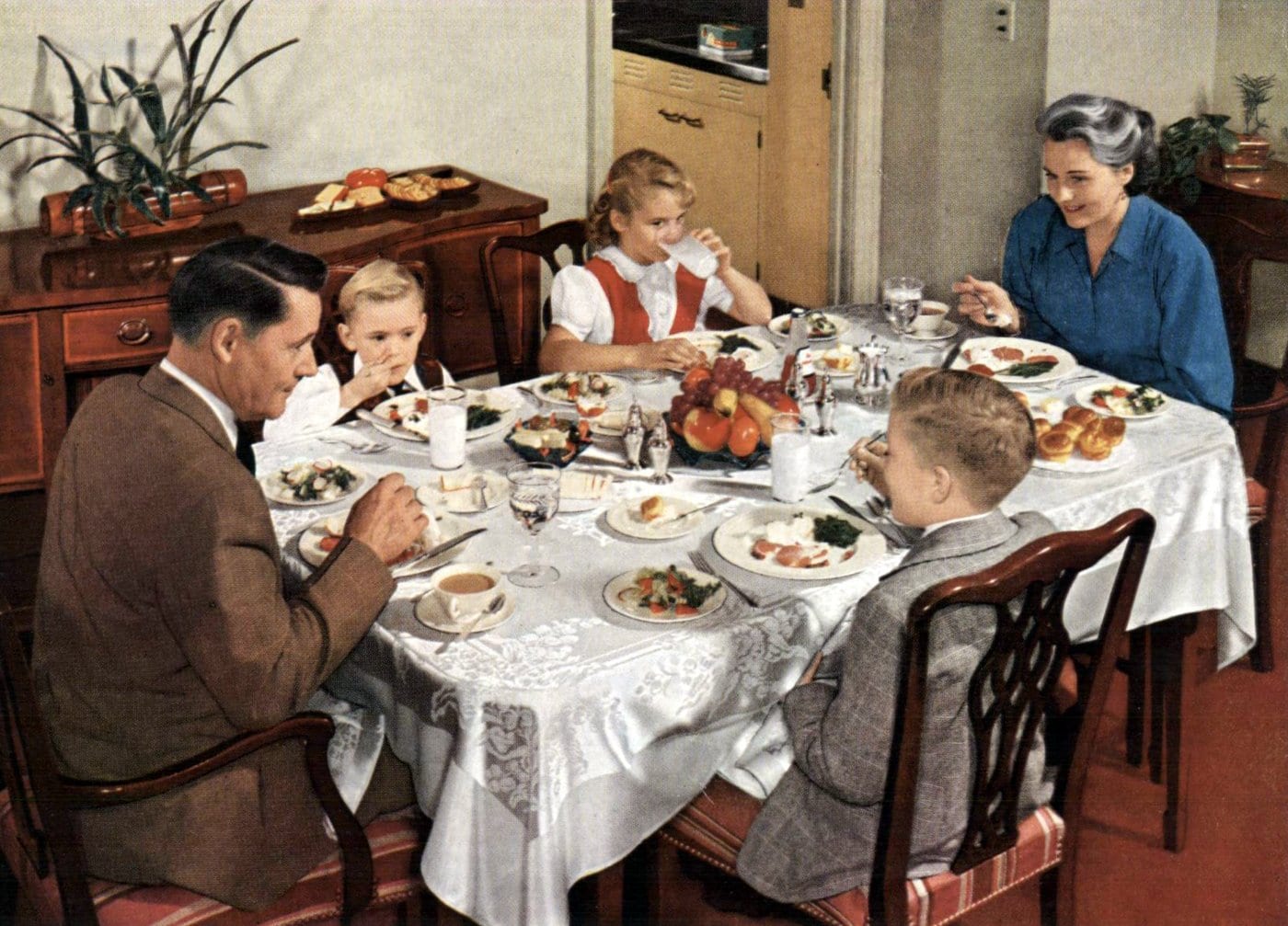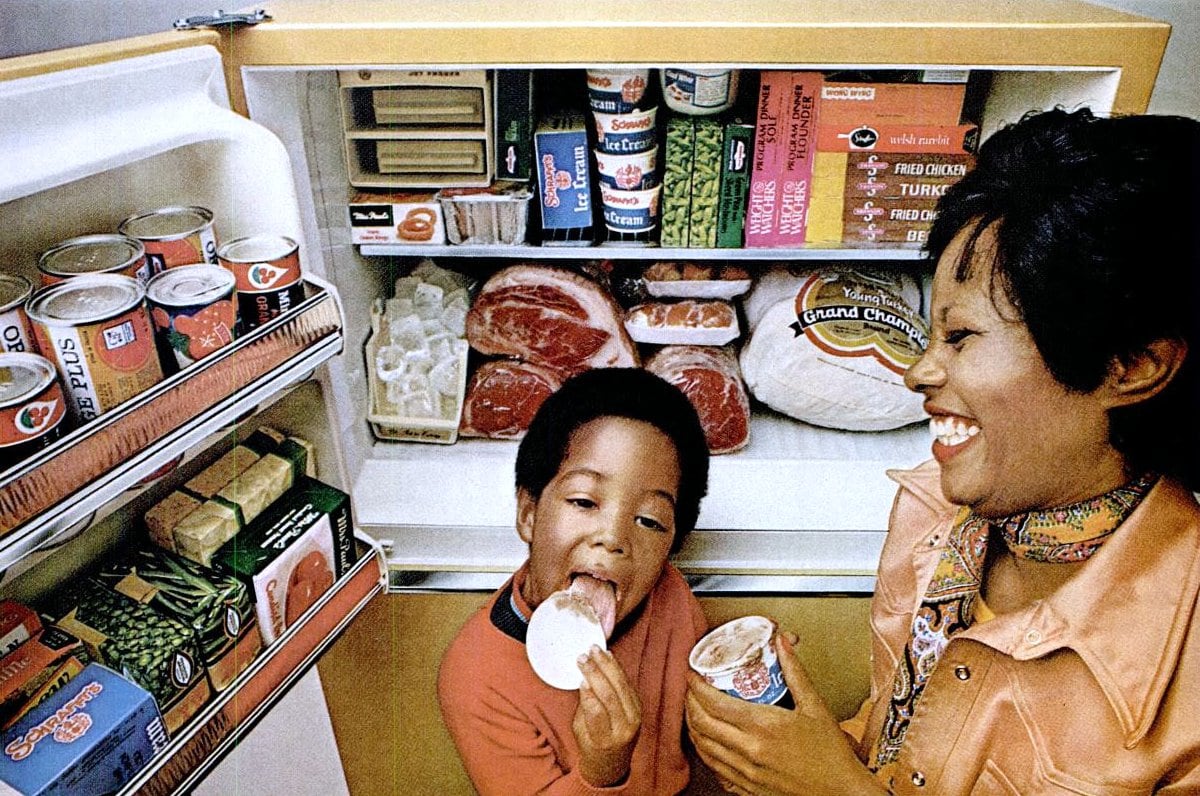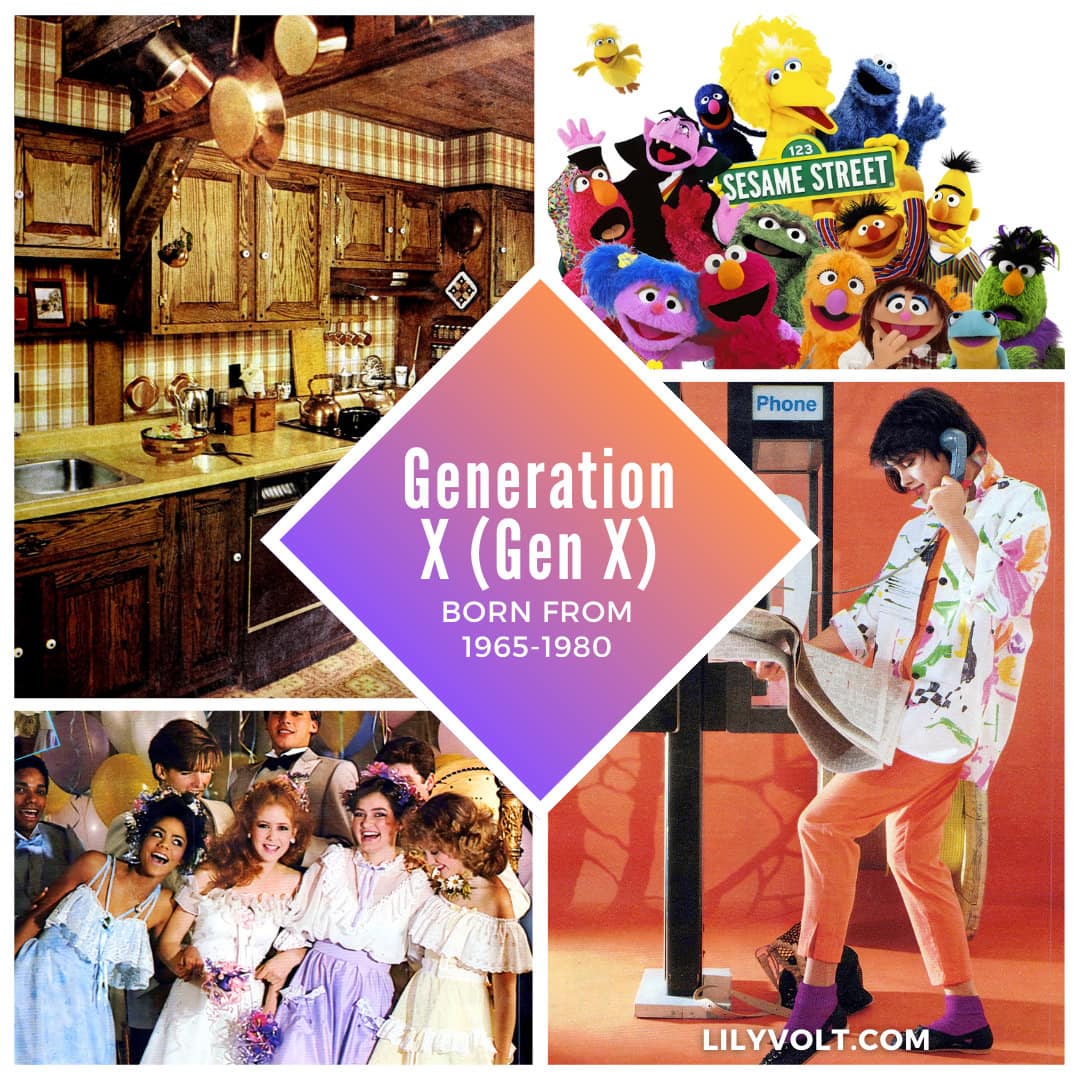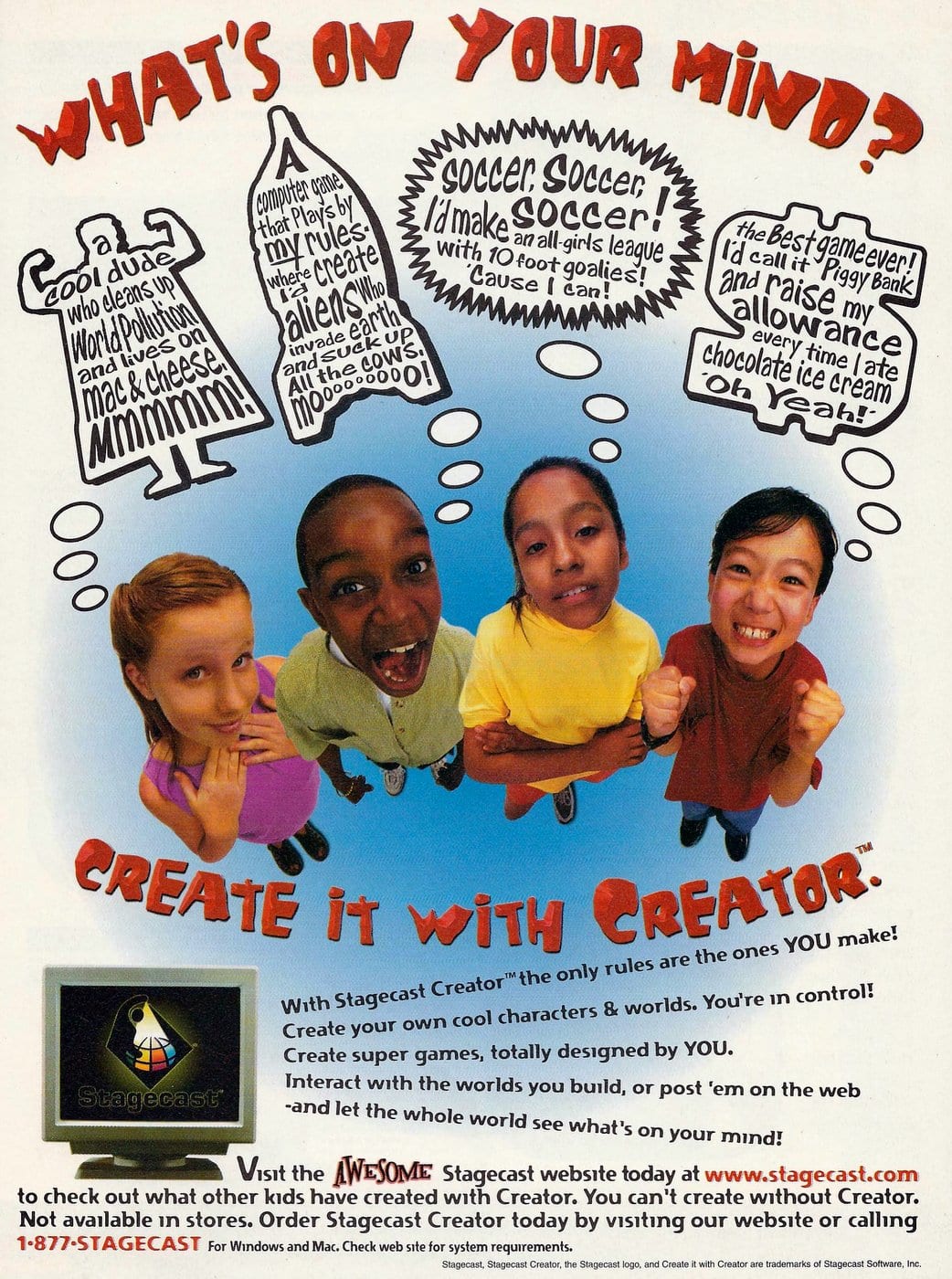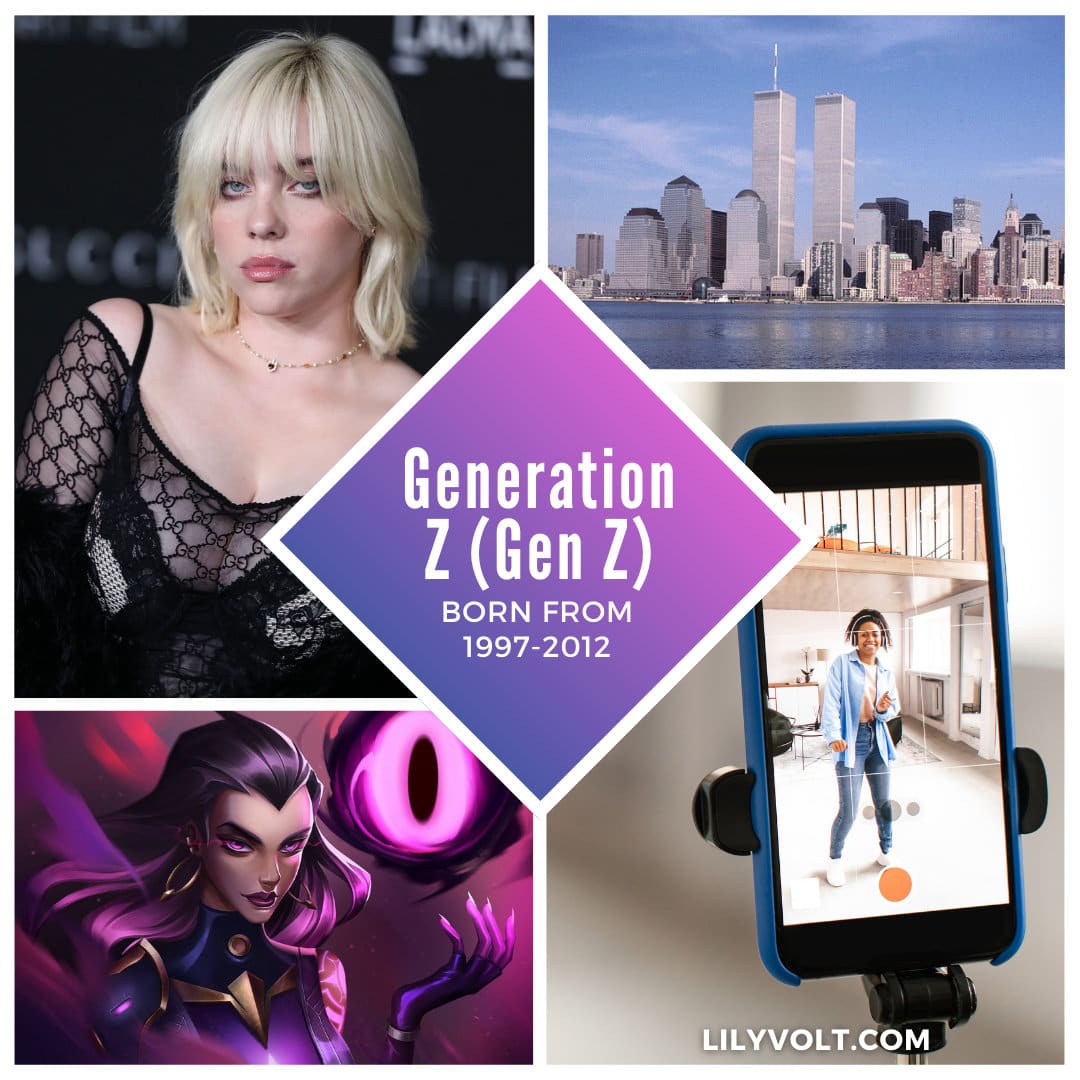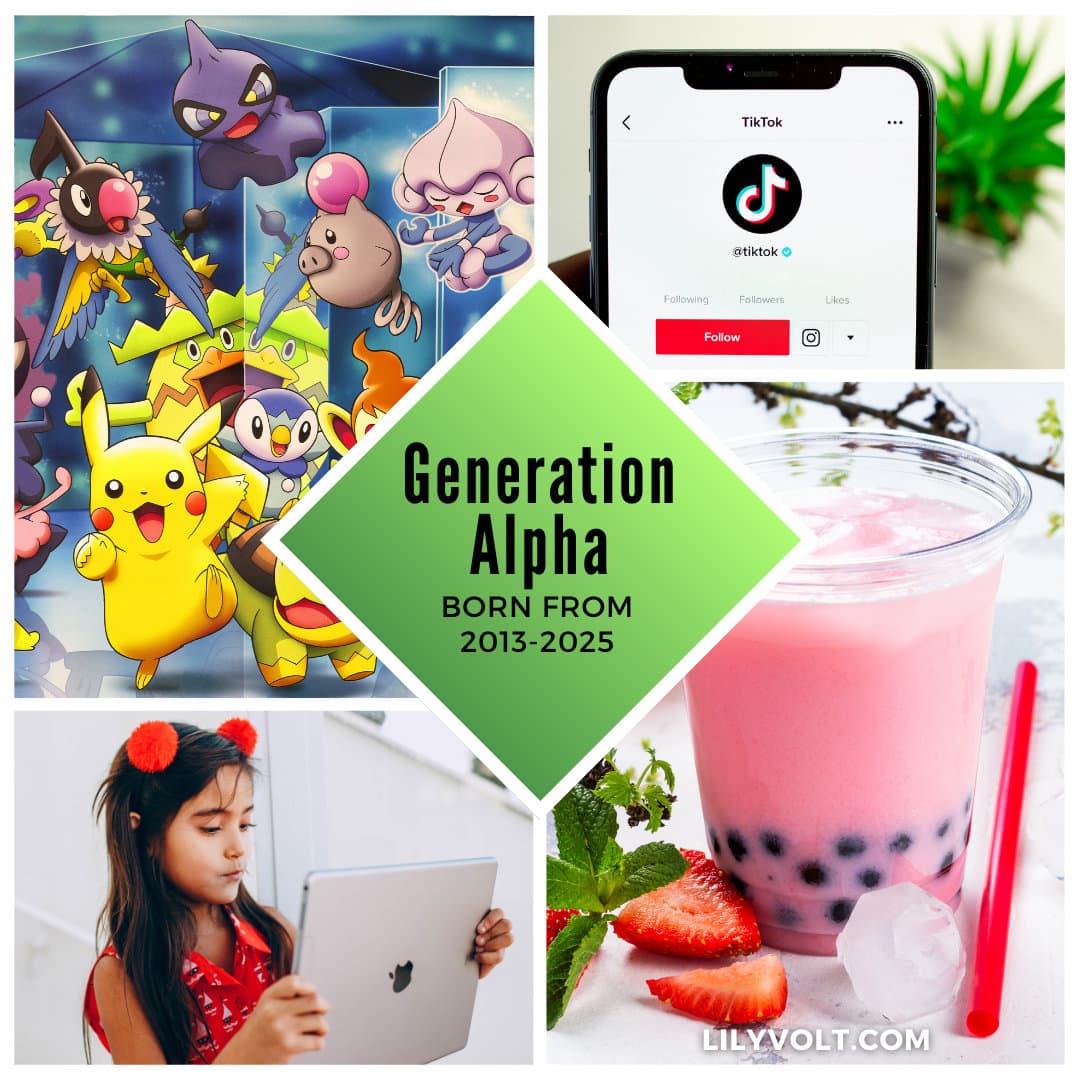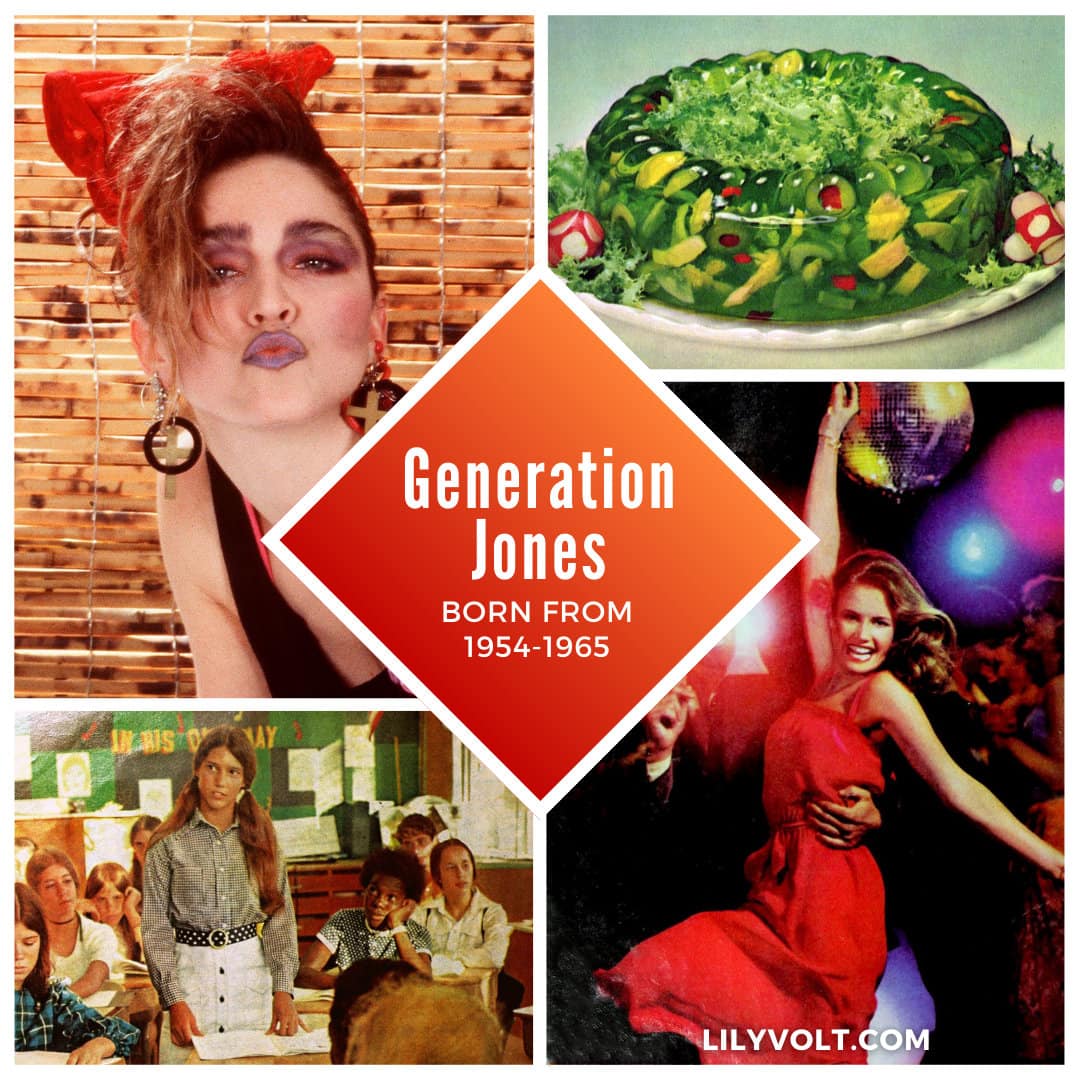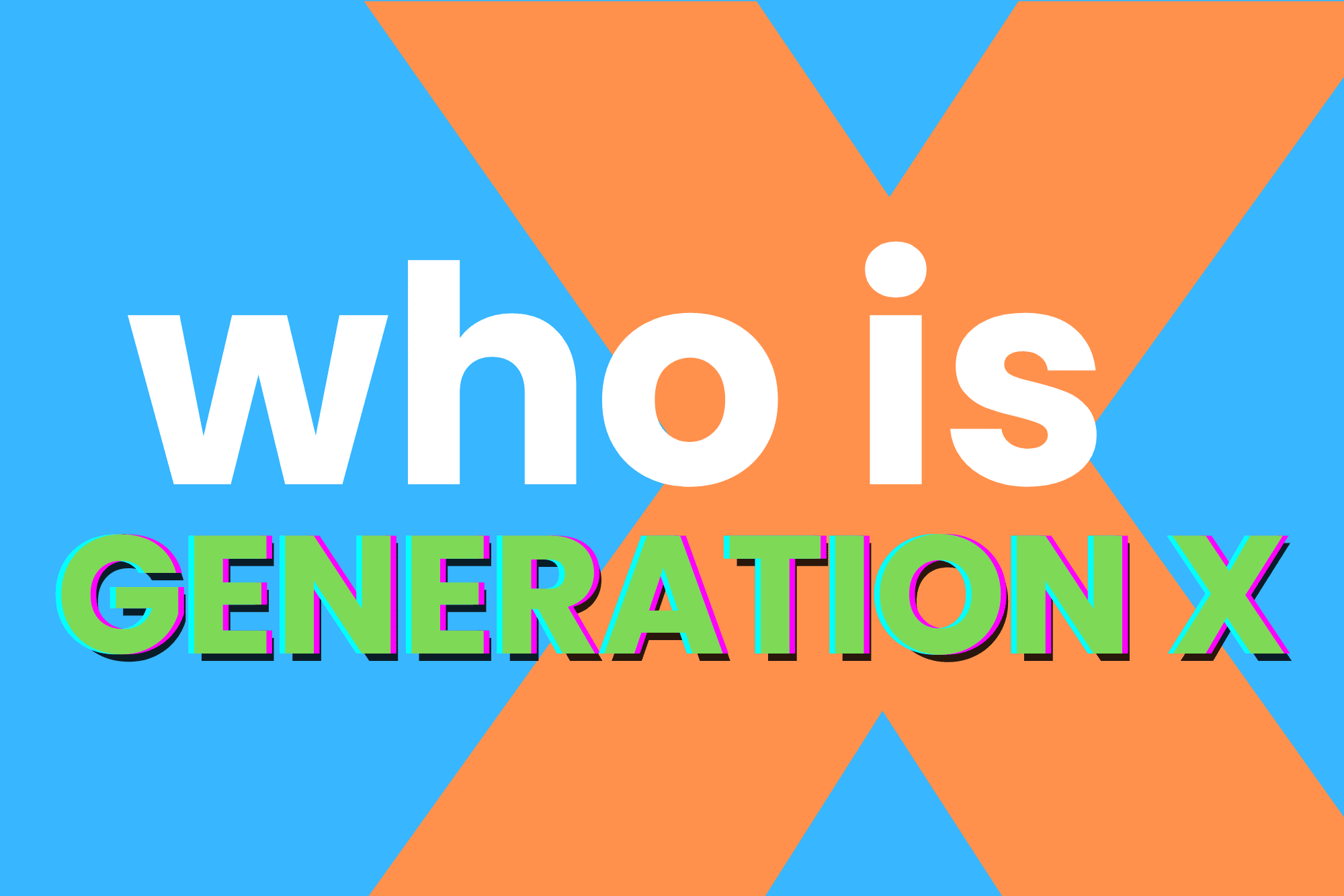Endlessly wondering why your dad insists on reading the newspaper when there’s a world of information at his fingertips, or why your Gen Z niece can’t put down her phone — even during family dinners?
Generations can seem like different worlds, and not just within families. They also bring their unique quirks and traits to the workplace, creating a complex but fascinating landscape.
This comprehensive-but-not-book-length guide to names of generations and the years they’re from explains what defines each generation, the history behind generational naming, and why understanding these generational identities is more than just a cultural curiosity.
So, as a card-carrying member of the MTV g-g-generation, read on to uncover what makes not only Gen X tick, but also those who came before and are coming up after us.
What is a generation?
A “generation,” in this context, means a group of people born within a specific time frame (often around 20-30 years), who generally experience similar social and historical events during their formative years. It’s about shared experiences and collective attitudes.
Sociologists use this framework to understand behavioral patterns, while marketers use it to tailor their campaigns. It’s not an exact science, but it offers a handy lens for making sense of how society evolves.
Do the names of generations really matter?
Why do people care about generations? It’s not just about slapping a catchy name on a group of people born around the same time. It’s about understanding how all these different age groups interact with the world.
Generations give us a way to talk about cultural shifts, societal trends, and the big events that shape our lives. And while there have always been families with multiple generations living under one roof, the concept of naming generations and diving deep into what motivates them is pretty new.
Having a way to organize and identify groups is especially helpful because there are more people on Earth than ever before. In the year 1900, there were about 1.7 billion people on the planet. Now, we have a worldwide population of more than 8 billion.
So, is a newborn a soon-to-be Gen Alpha or a yet-to-be-named group? It’s more than idle curiosity: Knowing the generation someone belongs to can offer clues about the world they’ll grow up in, the technology they’ll be comfortable with, and the social issues they might rally around.
Different generation names and years
The seven living generations are marked not just by their birth years, but also by distinct experiences that shape their collective identities. Here’s the full generation names list:
1. The Greatest Generation (born from 1901 to 1927)
Known for their resilience and tenacity, the Greatest Generation came of age during the turmoil of the Great Depression and later served in World War II. Forged by these defining historical events, they’re characterized by a strong sense of duty and an emphasis on community over individuality.
After the war, many contributed to a period of unprecedented economic growth, forever shaping the American landscape. Innovators like Norman Borlaug, responsible for the Green Revolution in agriculture, hail from this generation, along with notable figures such as Queen Elizabeth II and Betty White.
Despite the hardships they faced, their legacy is one of strength, sacrifice, and civic responsibility.

Why do they call it the Greatest Generation?
The term “Greatest Generation” was popularized by journalist Tom Brokaw in his 1998 book of the same name. Brokaw coined the term to honor the individuals who grew up during the hardships of the Great Depression, went on to fight in World War II, and later participated in rebuilding their countries and economies.
Their collective actions in confronting and overcoming some of the 20th century’s gravest challenges earned them this moniker. The name encapsulates the admiration and respect for their unique blend of resilience, sacrifice and their monumental contributions to world history.
Is there anyone still alive from the Greatest Generation?
As of 2022, the number of people alive from the Greatest Generation is significantly dwindling, given that the youngest would be around 95 years old. An exact number is hard to pin down, since national census efforts don’t collect this data by generational groups.
However, there are still some who are alive, often referred to as the “last of the greatest.” Many organizations and initiatives are dedicated to preserving their stories and experiences for future generations to learn from.
2. Silent Generation (born from 1928 to 1945)
Often overlooked due to their relatively smaller size, the Silent Generation grew up in the shadow of global conflict, but came of age during a time of increasing prosperity and stability.
They were early witnesses to the Civil Rights Movement and the growth of the suburban American Dream, and are generally viewed as traditionalists who value hard work, community, and a sense of propriety. (This cohort is also known as the Traditionalist Generation.)
Why do they call them the Silent Generation?
The name “Silent Generation” originated from their perceived collective character, which was viewed as more cautious, conformist, and quiet compared to the generations before and after them.
The term was popularized in the 1950s to describe a group of people who seemed to focus on their careers and avoid the political activism or public demonstrations that became hallmark traits of later generations. Part of this “silence” was thought to stem from growing up in times of economic hardship and global conflict, which instilled a sense of caution and reservation.
It’s worth noting that while the name suggests passivity or quietude, many individuals from this generation were far from silent in their contributions to society.
They participated actively in the early stages of the Civil Rights Movement, made significant cultural contributions, and played a part in the post-war economic boom. The name, therefore, is more of a social label than a universally accurate descriptor.
Is the Silent Generation the same as the Lost Generation?
Nope — the Silent Generation and the Lost Generation are not the same. These are two distinct generational groups, defined by different time periods and life experiences.
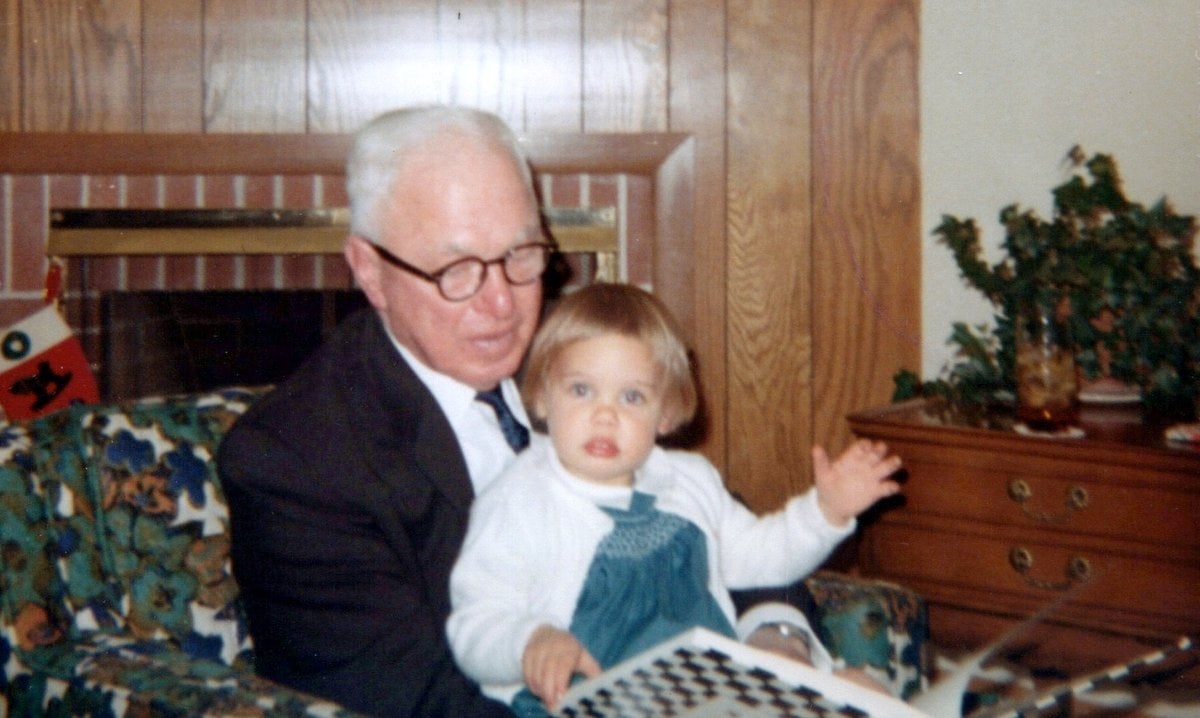
The Lost Generation refers to the generation that came of age generally around World War I. The term was popularized by writer Ernest Hemingway, but originated with Gertrude Stein, who once heard her French garage owner speak of auto mechanics who were unable to fix new cars as “une génération perdue” (a lost generation).
Where do they fit in, time-wise? The Lost Generation generally refers to those born between the 1880s and the 1900s. That means they faced the disillusionment that came with the brutalities of “The Great War,” and many members of this group are known for challenging traditional values in the wake of what they perceived as a meaningless conflict.
3. Baby Boomers (born from 1946 to 1964)
The Baby Boomers came into a world that was dramatically different than that of previous generations. This era was marked by the end of World War II and a period of unprecedented economic growth and prosperity in many Western countries, particularly the United States.
The name “Baby Boomer” refers to the “boom” in birth rates that followed the war, a phenomenon influenced by a sense of optimism and stability that encouraged families to grow.
Economically, Baby Boomers enjoyed the benefits of post-war prosperity. Suburbanization took off, and the “American Dream” of owning a home became a reachable goal for many. This generation is often perceived as reaping the rewards of this prosperity, with greater access to higher education and homeownership compared to their predecessors.
What was the cultural impact of Baby Boomers?
Culturally, Baby Boomers witnessed and often participated in some of the most transformative events of the 20th century. They were the driving force behind the Civil Rights Movement, second-wave feminism, and anti-war protests, often challenging the status quo and traditional values upheld by previous generations.
Baby Boomers were also the first generation to grow up in the age of television, marking a shift in how information was consumed and shared. Music was another defining cultural element, with the rise of rock ‘n’ roll and later, the countercultural anthems of the late 1960s and early ’70s.
While the Baby Boomer experience is often generalized as one of affluence and social activism, it’s crucial to recognize the disparities within the generation. Not all Baby Boomers prospered during the economic boom, and not all were involved in social or political activism. The generation spans a wide range of experiences, influenced by factors such as race, class, and geography.
Famous people from this generation include Oprah Winfrey, Bill Clinton, and Steven Spielberg, who each impacted American culture in their own unique ways.
4. Generation X (born from 1965 to 1980)
That’s us! Situated between the larger Boomer and Millennial generations, we Gen Xers learned independence early, and often describe ourselves as the first latchkey kids.
The term “latchkey kid” referred to a child who returned from school to an empty home because their parent(s) were at work, or who spent significant time at home unsupervised. This phenomenon was especially prevalent among Generation X due to a rise in dual-income households and single-parent families.
Economic necessities meant many parents had to work, leaving their children to fend for themselves after school. This gave rise to the “latchkey” moniker, referencing the house key many of these kids wore around their necks.
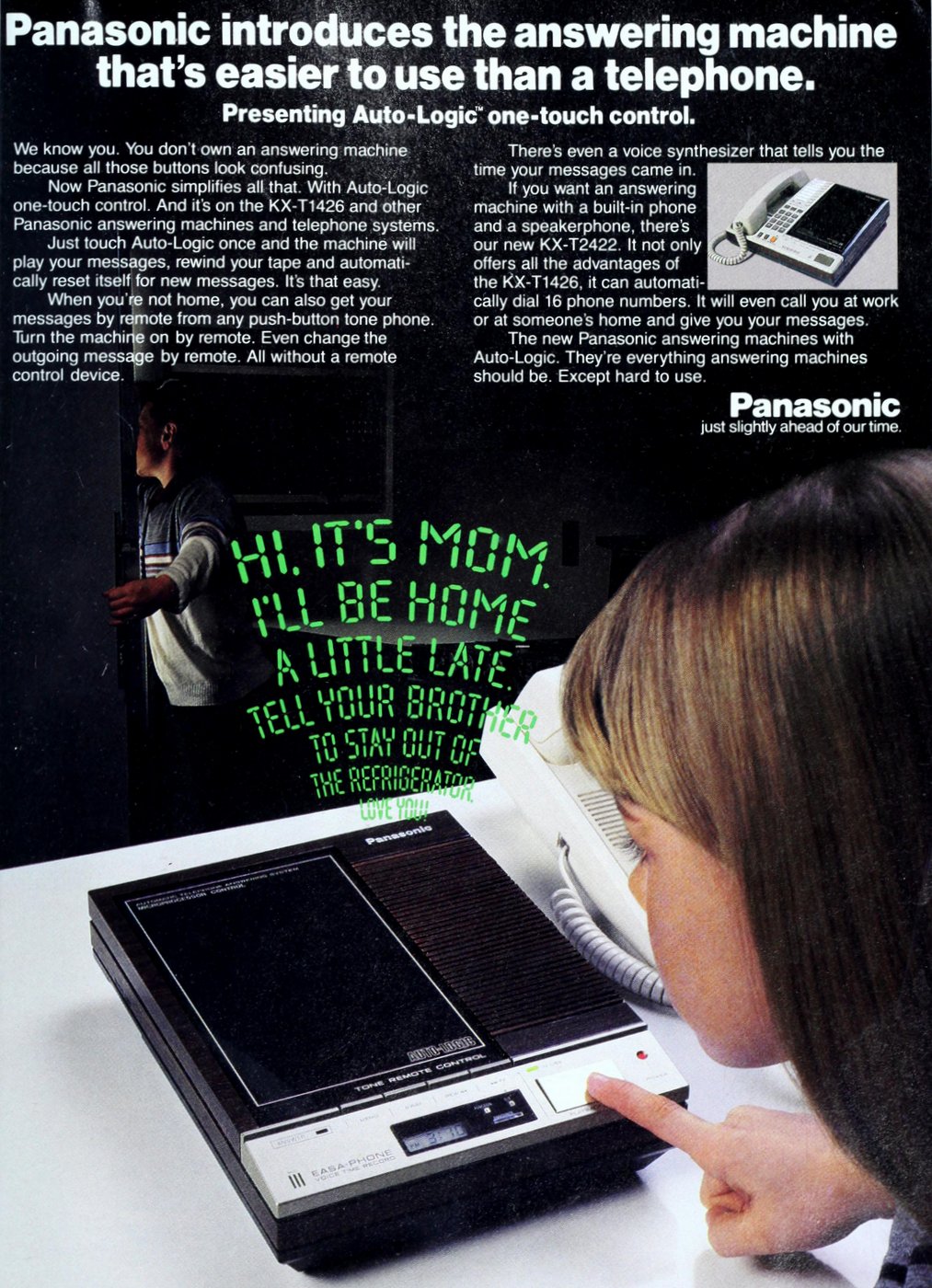
We were pioneers in the age of technology and the Internet, witnessing the shift from analog to digital — meaning the rise of personal computers, video games, and the World Wide Web as a whole, which utterly revolutionized how people lived and worked.
Our attitudes are often characterized by a blend of cynicism and pragmatism, fueled by the political, economic, cultural, and health uncertainties of our formative years, including the fall of the Berlin Wall, the 1987 stock market crash, and the AIDS epidemic.
Where did the name Generation X come from?
The term “Generation X” comes from the title of a book, Generation X: Tales for an Accelerated Culture, which was written by Douglas Coupland and published in 1991.
In the book, Coupland describes the lives of three disenfranchised young adults — scenarios that resonated with many 20-somethings who felt that they were part of a generation without a clear identity or voice, especially when compared to the Baby Boomers who preceded them.
The “X” in “Generation X” can also signify an unknown or undefined variable, reflecting the generation’s perceived lack of a distinct cultural identity. It also represented a sense of mystery, ambiguity, or even alienation.
Over time, the term came to be adopted by the media and popular culture to describe this demographic cohort.
It’s worth noting that the naming of generations is often a fluid process, with names arising from various sources, but once one gains traction in media and popular culture, it tends to stick. In the case of Generation X, Coupland’s book title proved to be that influential term.
5. Millennials, or Generation Y (born from 1981 to 1996)
Millennials are a generation defined by duality: analog childhoods and digital adulthoods. Growing up, many had a VHS player in the living room, and later transitioned to streaming services on their smartphones.
While the first part of their lives was marked by a booming economy, many entered the job market during or just after the Great Recession, affecting their career trajectories and attitudes toward financial security.
Technology plays a defining role in the Millennial experience. This generation came of age as the internet transitioned from a luxury to a necessity, from dial-up to broadband. They were the pioneers of social media, navigating the initial platforms like MySpace and Friendster, eventually moving onto Facebook, Twitter, and Instagram.
How have Millennials influenced culture?
Socially and politically, Millennials are known for their progressive attitudes. They tend to be more supportive of social justice issues, LGBTQ+ rights, and are generally more racially and ethnically diverse compared to previous generations.
They have also been highly affected by the events of 9/11, which for many was a formative experience leading to a heightened sense of global awareness and an increase in social and political activism.
But it’s not all rosy for Millennials. They’ve often been labeled as the “boomerang” generation for their tendency to move back in with parents due to economic constraints. Student debt is another significant burden, influencing life choices from career paths to homeownership.
It’s also worth noting that Millennials are often credited with changing the face of the modern workplace. With a focus on work-life balance, they are considered to be transforming traditional office culture, pushing for more flexibility, meaningful work, and a more collaborative environment.
Notable Millennials include Mark Zuckerberg, who revolutionized social interaction with Facebook, and Malala Yousafzai, who has been an outspoken advocate for girls’ education globally.
Overall, Millennials are a diverse and complex generation, coming of age during a period of rapid technological advancements and significant social and political shifts.
Why are they called Millennials?
The term “Millennials” reflects the generation’s coming-of-age during the early years of the new millennium — marking them as the bridge between the 20th and 21st centuries. It underscores their experience of growing up amidst the digital age and significant societal shifts.
6. Generation Z (born from 1997 to 2012)
Generation Z is the first to grow up with easy access to digital technology from a very young age, including smartphones and social media. The internet for them is not a novelty but a basic part of life — something that has been there since they were born. While Millennials witnessed the rise of the internet, Gen Z can’t imagine life without it.
But it’s not all about technology. This generation is also characterized by a pragmatic approach to their future. Having grown up during times of recession and social unrest, many are concerned with issues like climate change, mental health, and social equality.
Compared to their elders, Gen Z is considered to be more socially aware and more skeptical of traditional institutions, including political and educational systems.
How is Gen Z integrating into the workplace?
Gen Z is a highly entrepreneurial group. A significant percentage of Generation Z aims to become entrepreneurs, driven perhaps by witnessing the gig economy and the diversification of income streams.
This is the generation that has made careers out of YouTube, TikTok, and various forms of content creation and social media influencing. They’ve grown up with the idea that jobs and careers can be non-linear, and are often the result of a blend of skills and interests.

When it comes to the workplace, they value transparency, opportunity for advancement, and a work-life balance that leans heavily towards a flexible schedule, partly influenced by the years they’ve seen Millennials working.
Gen Z and diversity
This generation is also the most diverse in U.S. history. Inclusion and diversity are not just buzzwords for Gen Z; they’re expectations. They are less likely to tolerate brands or institutions that don’t represent a diverse range of backgrounds and experiences.
Notable Gen Z figures include climate activist Greta Thunberg, who ignited a global youth-led environmental movement, and Billie Eilish, a Grammy-award winning artist who has redefined pop culture norms.
Gen Z is a generation that defies easy categorization. They’re digital natives, socially conscious, entrepreneurial, and skeptical of the status quo, making them a force to be reckoned with as they come into adulthood.
7. Generation Alpha (born from 2013 to 2025, estimated)
Though still very young, the initial observations suggest that they will be the most technologically immersed generation to date.
Born into an era of advanced AI, machine learning, and a burgeoning focus on climate change, they’re expected to be the most educated generation, who will likely grow up with a greater emphasis on technology and sustainability than any prior group.
Each generation contributes its own flavor to the social and cultural stew that is our shared history. But remember, these are broad strokes. Individual experiences can vary widely, influenced by factors like ethnicity, socio-economic status, and geography.
Navigating nuance: Meet the micro-generations
You may have heard of terms like Generation Jones, Xennials, or even the Oregon Trail Generation and wondered what they’re all about. These sub-generations serve as bridges between the major generational groups, offering more nuanced viewpoints of those who don’t completely fit the mold.
The Lucky Few (born from 1929 to 1945)
The “Lucky Few,” a term sometimes used to describe individuals born during the late 1920s through the early 1940s, occupy a unique space within the Silent Generation. This group, smaller in number due to lower birth rates compared to the Baby Boomers that followed, grew up during the Great Depression and World War II but came of age in a time of relative stability and economic growth in the post-war era. The name “Lucky Few” comes from the advantageous timing of their entry into adulthood, which coincided with a period of opportunity and prosperity.
The Lucky Few are generally seen as having benefited from strong educational systems, expanding job markets, and rapid advances in technology and medicine. Unlike the preceding generations that experienced economic hardship or wartime struggles during their formative years, the Lucky Few entered their working and family-building years during a time of expansion and optimism. This unique set of circumstances often resulted in long-lasting marriages, stable careers, and the ability to accumulate wealth, in many cases becoming the first in their families to attend college or own a home.
The Lucky Few generation straddled tradition and change
In addition, the Lucky Few were young enough to adapt to the social changes of the 1960s and 1970s but old enough to have been instilled with the more traditional values of their parents. They were witnesses to the Civil Rights Movement, the Women’s Liberation Movement, and the Sexual Revolution, often serving as a bridge between the traditional ways of their parents and the more progressive viewpoints of their children, the Baby Boomers.
Still, it’s essential to note that not everyone within this age range was “lucky” in the way the term suggests. Economic prosperity and social opportunity were not equally distributed among all groups, and many faced significant challenges tied to race, gender, and class.
Overall, the Lucky Few, a segment within the Silent Generation, had a unique experience shaped by a mix of traditional values and rapid social change, set against a backdrop of relative economic stability and opportunity.
Generation Jones (born from 1954 to 1965)
Generation Jones, a term coined to describe those born in the latter years of the Baby Boomers and the early years of Generation X, typically spans from around 1955 to 1965. This micro-generation takes its name from the slang term “jonesing,” which captures a sense of unfulfilled craving or aspiration. Members of Generation Jones came of age during a period of shifting societal norms and economic volatility, bridging the gap between the post-war idealism of the earlier Boomers and the pragmatic cynicism often associated with Gen X.
Having been too young to fully experience the social movements of the 1960s but too old to be native digital users, Generation Jones members often feel caught between two worlds. They witnessed the end of the Vietnam War, the Watergate scandal, and the oil crisis, all of which contributed to a more skeptical worldview compared to earlier Boomers. Yet, they also grew up in a time when the American Dream still seemed achievable and were generally optimistic about their ability to realize it.
Generation Jones & culture
Culturally, Generation Jones had a significant impact on music, fashion, and popular trends. They were the teenagers and young adults who popularized disco and punk rock, and they were the initial audience for the Star Wars franchise and other blockbuster films of the era. However, they were also the first to feel the effects of the economic downturns of the 1970s and 1980s, often finding that the prosperity and stability that characterized their early lives were more elusive in adulthood.
Generation Jones has been largely overlooked in discussions about generational characteristics, but their unique positioning offers important insights into the shifts in American political, social, and economic life during the late 20th century.
Xennials and the Oregon Trail Generation (born from the late 1970s to the mid 1980s)
Xennials, a micro-generation born roughly between 1977 and 1983, serve as a sort of bridge between the analog world of Generation X and the digital landscape that Millennials grew up in. This sub-generation lived a childhood free from the constant connectivity that defines modern life but adapted to the digital age in their formative young adult years. They experienced the world both before and after the internet, smartphones, and social media became ubiquitous.
Xennials & the analog-to-digital transition
Xennials had the unique experience of applying for their first jobs using paper resumes and perhaps even finding their first love without the aid of a dating app. They witnessed the rise of the personal computer and the early days of the internet but also remember a time when people made plans via landlines and used paper maps for navigation. Some of them might even have childhood photos that were actually shot on film cameras.
Academically, they straddle two educational paradigms. Xennials were educated primarily without the benefits or distractions of digital technology in the classroom but were among the first to integrate technology into their higher education experiences. This group is often credited with having the best of both worlds–a foot in both analog and digital realities.
They also grew up in an era marked by relative peace and prosperity but entered the job market either just before or around the time of economic downturns like the dot-com bubble burst and the 2008 financial crisis. This exposure to economic volatility has shaped their views on financial security and has often made them more cautious than Millennials but more adaptive than Gen Xers.
Xennials & pop culture
In the popular culture sphere, Xennials enjoyed the grunge era, the early days of hip-hop, and the golden age of Saturday morning cartoons. They were the original audience for shows like “Friends” and “The Fresh Prince of Bel-Air,” and movies like “The Matrix” have a special place in their hearts.
In essence, Xennials serve as a living link between two distinct generational experiences. Their hybrid nature makes them a fascinating group to study, particularly in the contexts of technological adaptation, cultural shifts, and the changing nature of work and communication.
Zillennials (born from 1993 to 1998)
Zillennials are the young adults born at the cusp between the Millennial and Generation Z cohorts, around 1993 to 1998 (though some sociologists widen the gap to between 1992 and 2002 — this isn’t set in stone quite yet). This micro-generation is often considered a blend of the characteristics typically attributed to both Millennials and Gen Z, melding traits like tech-savviness with a penchant for social activism.
Balancing the scales: Zillennials and their dual generational identity
Growing up in the late ’90s and early 2000s, Zillennials experienced a world already deeply influenced by the internet but not yet dominated by social media. They remember a childhood where dial-up internet was a norm, but they also quickly adapted to the high-speed, constantly connected world of today.
Culturally, they’ve consumed media across a broad spectrum of platforms, from VHS tapes and cable TV to Netflix and TikTok. Their tastes in music, movies, and fashion reflect a mishmash of late Millennial and early Gen Z influences. Zillennials might feel equally nostalgic for early Disney Channel Original Movies as they do for Vine, the short-form video app that was a precursor to TikTok.
Zillennials socially & politically
In terms of social and political views, Zillennials often combine Millennial optimism with Gen Z pragmatism. They are generally progressive, valuing diversity and inclusion, but also display a realist’s understanding of social and economic challenges. Many of them were too young to vote in the 2016 U.S. Presidential election but came of age politically during the Trump era, making them more politically engaged than some of their Millennial counterparts.
While still young and in the early stages of their careers, Zillennials are entering a job market that is increasingly precarious, shaped by gig work, remote opportunities, and a need for continuous skills upgrading. Their education, often peppered with online courses and “life hacks,” reflects a DIY approach to knowledge, embodying the Gen Z trait of seeking self-improvement alongside formal education.
Because they straddle two generational categories, Zillennials often feel like they don’t fully belong to either but possess the advantages and challenges of both. They’re digital natives like Gen Z but also value the face-to-face interactions that Millennials hold dear. As they continue to carve out their unique space in the world, Zillennials offer an intriguing glimpse into how fluid and complex generational identities can be.
Celebrities from each generation
Just for fun, here’s a name-drop from each generational cohort, including the micro-generations:
The Greatest Generation: Queen Elizabeth II, Betty White
The Lucky Few: Colin Powell, Martha Stewart
Silent Generation: Warren Buffett, Morgan Freeman
Generation Jones: Steve Jobs, Madonna
Baby Boomers: Oprah Winfrey, Bill Gates
Xennials/Oregon Trail Generation: Serena Williams, Ashton Kutcher
Generation X: Will Smith, Jennifer Lopez
Zillennials: Zendaya, Pete Davidson
Millennials: Mark Zuckerberg, Taylor Swift
Generation Z: Billie Eilish, Malala Yousafzai
Generation Alpha: Too young to tell, but keep an eye out!
Whether it’s the tech innovation of Bill Gates or the activism of Malala Yousafzai, each generation — and sub-generation — has its own stars who exemplify some of its core traits.
What generations existed in the 1800s?
The concept of grouping people by generations is a 20th-century invention. Thanks to rapid technological advancements and the media’s love for categorization, we’re more focused on generational traits now than ever before.
But in the 1800s, what about the Victorian Era? Well, while both “eras” and “generations” are ways of marking time and categorizing experiences, eras tend to be broader in scope — typically spanning longer periods, often several decades to centuries.
Eras are also defined by significant historical, cultural, technological, or social changes or events. These might include reigns of monarchs, cultural movements, or technological advancements.
The Lost Generation, representing those born between 1880 and 1900, was one of the first generations to be specifically named and studied, setting the stage for this kind of sociological categorization to become more common.
How well do the different generations get along?
When multiple generations share the workplace, it’s like a meeting of different worlds. Each generation brings its own attitudes, work styles, and tech-savviness to the table. Understanding these dynamics can help businesses foster a more collaborative and efficient environment.
For instance, Baby Boomers and Gen X might offer years of experience and industry knowledge, while Millennials and Gen Z can bring fresh perspectives and digital skills.
Names of generations & labels: Asset or obstacle?
However, it’s essential to tread carefully. Stereotyping individuals based on generational traits can stifle innovation and create unnecessary tension. It’s also worth considering how much of what’s labeled as “generational behavior” is actually a matter of life stage.
After all, many Baby Boomers were once the young upstarts challenging the status quo, just as many Millennials will likely become more conservative as they age. So while it’s useful to have a grasp of general generational tendencies for better team synergy, it’s crucial to treat each coworker as an individual with their unique skills and experiences.
As you can see, each generation plays a unique role in shaping the world. Knowing more about these generational traits and timelines not only makes for interesting trivia but also offers valuable insights into the rapidly shifting landscape of human behavior and societal norms.

